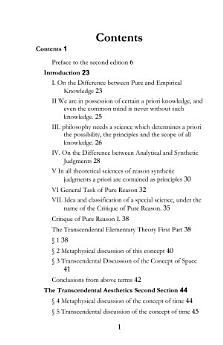Critique of Pure Reason
About this ebook
Kant's Critique of Pure Reason lays the foundation of his Systematic Metaphysics published across a dozen works with the singular aim of 'fixing' the field by reconciling Rationalism, Idealism, and Empiricism to move Metaphysics into a full form of Science, much, in the same manner, the Greeks did to Logic or The Renaissance logicians to the hard sciences. Kant sparked a metaphysical revolution which he understands as akin to the Copernican revolution. The question of how the iterations of the transcendent 'I' through time and space can 'know' anything (make synthetic a priori judgments) with any level of certainty takes the proscenium in the Critique.
David Hume's fundamental error, in Kant's view, is that he assumes a Rationality which is Techne without Telos, a description only of what is, not what should be. To this end, he uses a Greek conception of Rationality as logos within a Platonic Ontology, splitting reality into two subdivisions between form and sense- perception, between Numinal and a phenomenological world. As physics is pure science, metaphysics is pure philosophy; "Pure knowledge of reason from mere concepts is called pure philosophy, or metaphysics... Metaphysics, then, both of nature and of morals, and especially the critique of reason venturing out on its own wings, which precedes it in a propaedeutic way, are actually the only things that we can call philosophy in the true sense of the word".
The Critique of Pure Reason undertakes an examination of reason itself, articulating Kant’s revolutionary idea that the mind actively shapes experience rather than passively receiving information. Kant distinguishes between phenomena (the world as humans perceive and experience it) and noumena (things-in-themselves, which remain unknowable), arguing that human knowledge is inherently limited to the realm of possible experience. By introducing fundamental concepts such as the categories of understanding, transcendental idealism, and the antinomies of pure reason, Kant attempts to reconcile science, morality, and freedom within coherent boundaries, thus establishing both the power and the constraints of reason.
This work effected a lasting revolution in philosophical thought and established Kant as the central figure of modern philosophy who synthesized early modern rationalism and empiricism while setting the terms for much of nineteenth and twentieth century philosophy. The second edition substantially revised key sections including the prefaces, introduction, Transcendental Aesthetic, Transcendental Deduction, and the chapter on Phenomena and Noumena, adding the famous "Refutation of Idealism" to counter criticisms that his transcendental idealism denied the reality of external objects. By 1790 Kant had secured international fame and came to dominate German philosophy in the late 1780s, with K.L. Reinhold's popularizing Letters on the Kantian Philosophy (1786) leading to the installation of a chair devoted to Kantian philosophy at Jena in 1787, which rapidly became the focal point for the next phase in German intellectual history. The work's influence extended beyond philosophy into natural science, with figures like Hans Christian Ørsted recognizing its impact and quantum mechanics arguably translating Kant's distinction between noumena and phenomena into mathematical form through wave-functions and operators. The text permanently changed philosophy's problems and methods, establishing human autonomy as the foundation for scientific knowledge, morality, and religious belief while arguing that we cannot have knowledge of things in themselves but only of things as they appear through the forms of sensibility and categories of understanding. Though criticized by Jacobi and others for apparent contradictions about what we can know regarding things in themselves, the work's doctrine of transcendental idealism became widely recognized as the foremost philosophical position, influencing nearly every field of humanities and social sciences, inspiring the German Idealist movement through Fichte and others, and shaping literature from Proust to modern thought while its claim that space and time are subjective forms rather than objective realities remained constant throughout Kant's subsequent philosophy.








